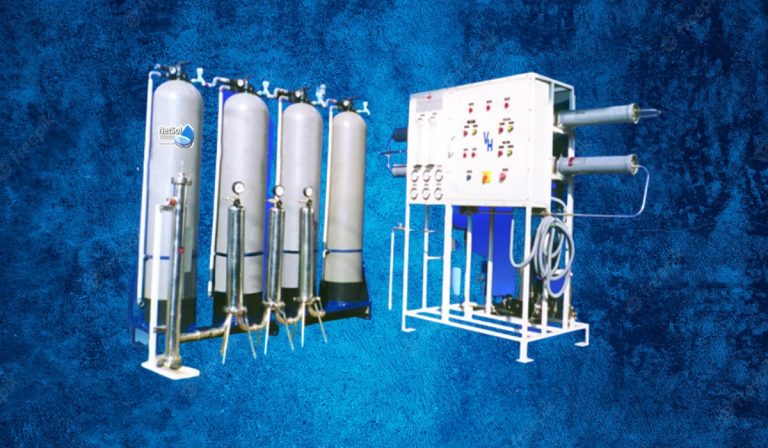
Reverse osmosis (RO) permeate is soft, low-alkalinity water with a slightly acidic pH. Finished water from RO facilities can corrode downstream fixtures and pipes, including the distribution system, if post-treatment is not done appropriately. Chemical addition is part of the post-treatment for commercial Ro plants process to modify water quality. Before disinfection and distribution, a limited amount of raw water is mixed with permeate. This method is often used when the water quality allows for a reduction or even an elimination of the need for corrosion control agents.
Post-treatment in Commercial RO Plants
The water is stabilized and distributed during post-treatment. Disinfection is employed to guarantee a “safe” water supply despite the fact that desalination technologies are very effective barriers to pathogenic organisms. It is used to eradicate any bacteria, protozoa and viruses that may have gotten into the desalination process-bypassed water. UV radiation, UV lamps placed directly on the product, chlorination and chloramination are all methods of disinfection. To provide a “residual” disinfection agent in the water supply system and guard against contamination entering the system, either chlorination or chloramination is utilized in many countries.
Why should water from a Commercial RO facility be re-mineralized?
Since reverse osmosis is ineffective at eliminating dissolved carbon dioxide, it permeates into the permeate side and lowers the pH of the permeate stream by approximately 1 unit. Additionally, RO is not a selective process, so if your feed water has a low content of calcium and magnesium relative to sodium, the permeate water would also have a very low calcium and magnesium concentration.
Water with little mineral content has few negative effects:
1: It has high potential for corrosion. Dietary deficiencies increase the risk of heart disease and cerebrovascular disease.
2: For drinking water, the WHO suggests a magnesium content of 10 mg/L and a calcium content of 30 mg/L.
What are the procedures for re-mineralization?
- Blend the water with filtered feed water and adjust the pH range.
- Use calcite limestone (CaCO3, MgO) percolation combined with CO2 addition and Na2CO3 addition.
- Add NaHCO3 and CaCl2.
Conclusion
Drinking water that is sufficiently mineral-rich is necessary to maintain excellent health and it also tastes better. You shouldn’t give up on your Commercial RO water filtration system, though. You can re-mineralize RO water in a variety of additional ways to make sure that you always have access to pure, healthy water for drinking and cooking.
There are many industrial applications that call for demineralized or deionized water, and reverse osmosis is a reliable and efficient technology to generate water that is suited for these uses. The RO permeate’s quality can be improved with additional post-treatment following the RO system, such as mixed bed deionization, making it appropriate for the most demanding applications. RO system’s proper pre-treatment and monitoring are essential for avoiding expensive repairs and unforeseen maintenance.
Your Commercial RO Plant should deliver high purity water for many years if it is designed properly, has a maintenance schedule and is supported by knowledgeable service personnel. To learn more about our wide range of Commercial RO Plants, call us at +91-9650608473 or send an email to enquiry@netsolwater.com.
